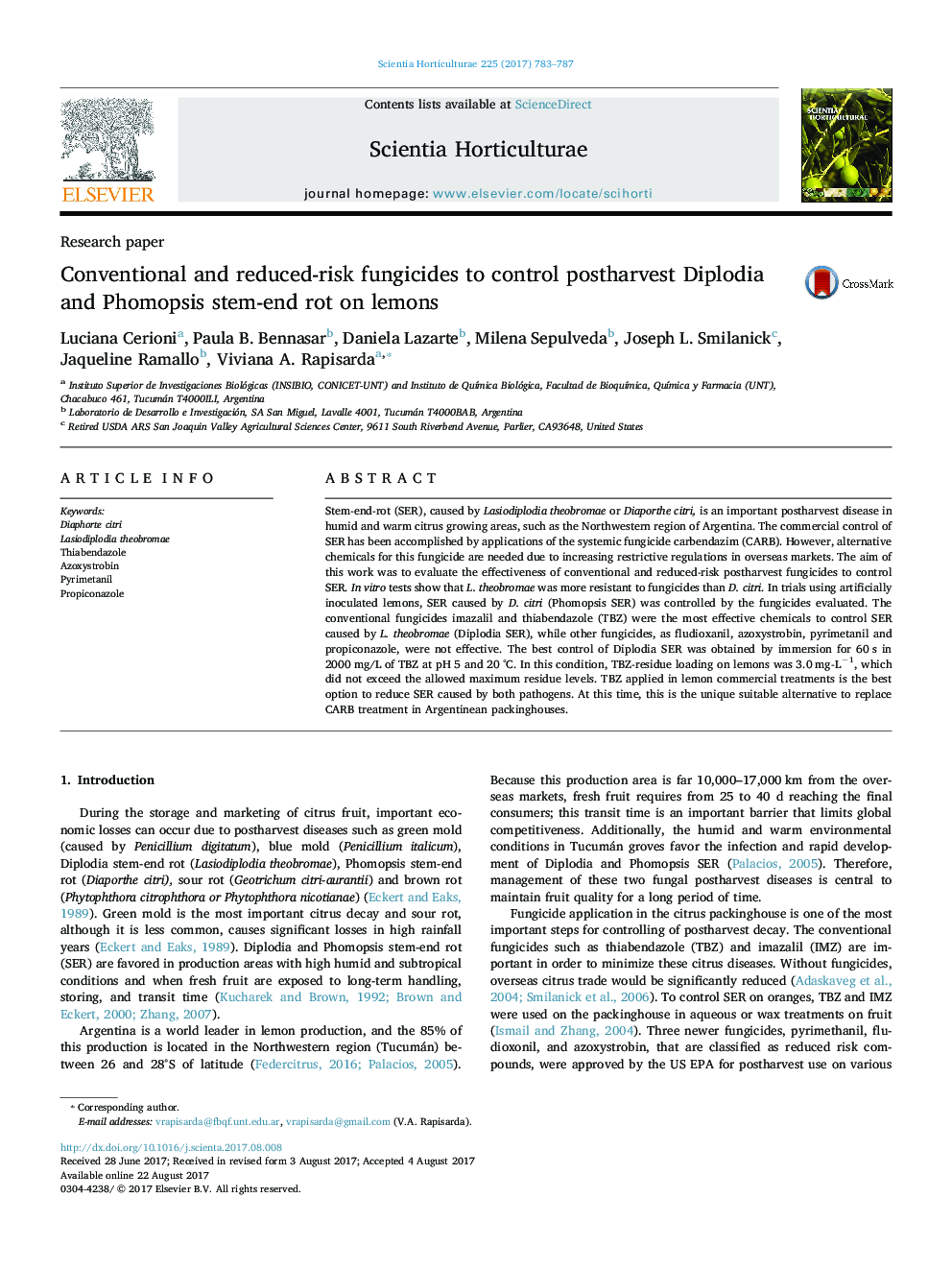| Article ID | Journal | Published Year | Pages | File Type |
|---|---|---|---|---|
| 5769330 | Scientia Horticulturae | 2017 | 5 Pages |
â¢Fungicides were more efficient to inhibit the growth of D. citri than L. theobromae.â¢Phomopsis SER was controlled on lemons by conventional and reduced-risk fungicides.â¢Diplodia SER was controlled on lemons only by the fungicides IMZ and TBZ.â¢Immersion in 2000 mg/L TBZ pH 5 for 60 s was the best treatment against Diplodia SER.
Stem-end-rot (SER), caused by Lasiodiplodia theobromae or Diaporthe citri, is an important postharvest disease in humid and warm citrus growing areas, such as the Northwestern region of Argentina. The commercial control of SER has been accomplished by applications of the systemic fungicide carbendazim (CARB). However, alternative chemicals for this fungicide are needed due to increasing restrictive regulations in overseas markets. The aim of this work was to evaluate the effectiveness of conventional and reduced-risk postharvest fungicides to control SER. In vitro tests show that L. theobromae was more resistant to fungicides than D. citri. In trials using artificially inoculated lemons, SER caused by D. citri (Phomopsis SER) was controlled by the fungicides evaluated. The conventional fungicides imazalil and thiabendazole (TBZ) were the most effective chemicals to control SER caused by L. theobromae (Diplodia SER), while other fungicides, as fludioxanil, azoxystrobin, pyrimetanil and propiconazole, were not effective. The best control of Diplodia SER was obtained by immersion for 60 s in 2000 mg/L of TBZ at pH 5 and 20 °C. In this condition, TBZ-residue loading on lemons was 3.0 mg-Lâ1, which did not exceed the allowed maximum residue levels. TBZ applied in lemon commercial treatments is the best option to reduce SER caused by both pathogens. At this time, this is the unique suitable alternative to replace CARB treatment in Argentinean packinghouses.
